Denmark in the South West of WA; Recollections of War (2021)
Australia So Much to See
Douglas Robert Steuart Bader qualified from RAF Cranwell as a pilot officer in June 1930. An aerobatics enthusiast, Bader cared
little for the views of his superiors when it came to performing dangerous aerial stunts. Attempting a low altitude roll in
a Bristol Bulldog, his left wing clipped the ground and crashed. Surgeons amputated his legs, one above and one below the knee.
Crashed
slow-rolled near ground. Bad show, Bader wrote in his logbook after the accident.
With steely determination Bader learned how
to use artificial legs, and by 1932 he was driving a modified car, playing golf and dancing. He even flew a plane and was judged
competent for active service. Despite this, the RAF decommissioned him on medical grounds.
Towards the end of the 1930s,
after intervention of Air Vice Marshal Frederick Halahan from his RAF Cranwell training days, Bader was given back his wings.
After
a number of successful missions as a fighter pilot against the German planes, Bader was placed in command of 242, a Squadron of mainly
Canadian pilots who had lost many comrades during the Battle of France. Bader was able to earn the Canadians respect and under
his leadership 242 became an effective fighting force.
The Battle of Britain officially began on the 10th of July 1940 and 242
Squadron was soon in the thick of the fighting.
In March 1941, Bader was promoted to active wing commander, in charge
of three fighter Squadrons. Now piloting a Spitfire, Bader and his wing of three squadrons concentrated on engaging with and
bringing down Messerschmitt 109s. Baders wing twice engaged with Adolf Galland, the German fighter ace who would become Baders
lifelong friend.
During August, doing battle with the twelve 109s, a collision with one sheared off part of his Spitfires fuselage.
Despite one prosthetic leg being trapped, he deployed his parachute and ejected. Knocked unconscious he woke to find two German
soldiers unbuckling his parachute harness.
A model 25 pounder field gun and other equipment on display (at left)
The air force room is where the collection first started. This extensive display features airmen, planes and other items.
A bugle, and a mandolin made by a soldier in New Guinea in 1945, believed to have been made from coconut fibre, and it has mother
of pearl inlays made from shells off the beach. A model of a sailing ship, completes the display on this table (above).
A
photo of Pilot Officer Roy Alexander Chopping, from Albany, Western Australia at right. He won the Distinguished Flying Cross during
WWII.
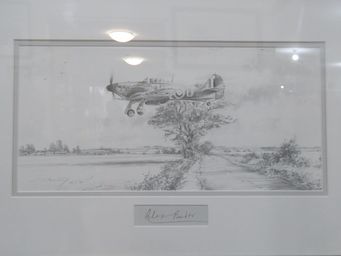
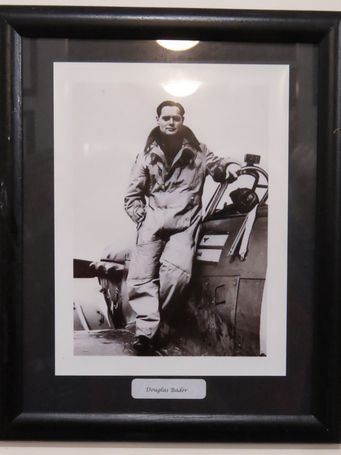
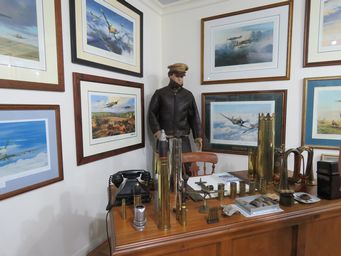
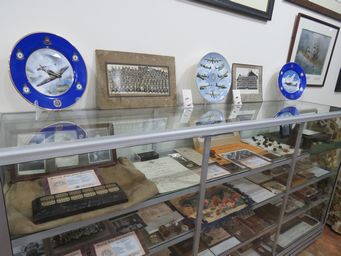
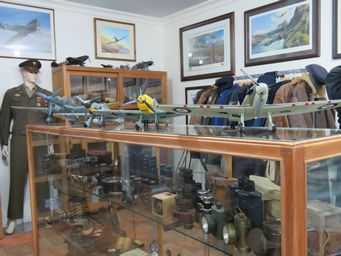
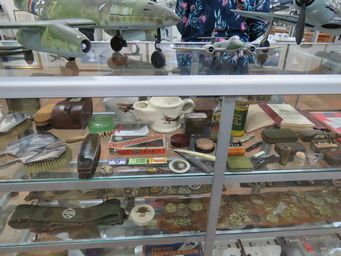
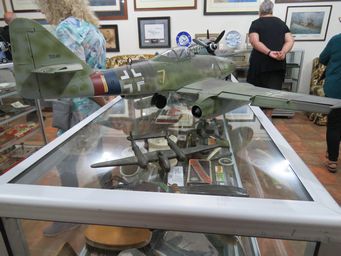
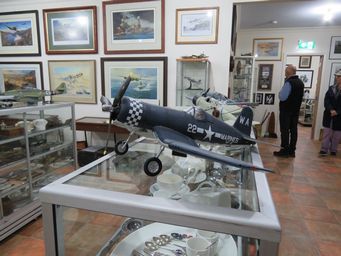
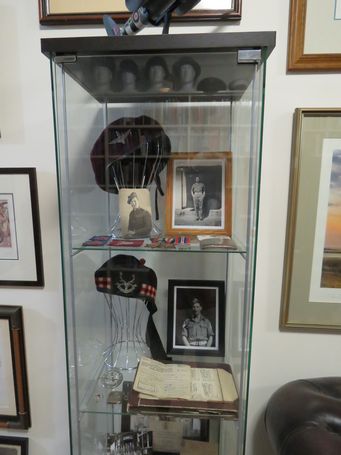
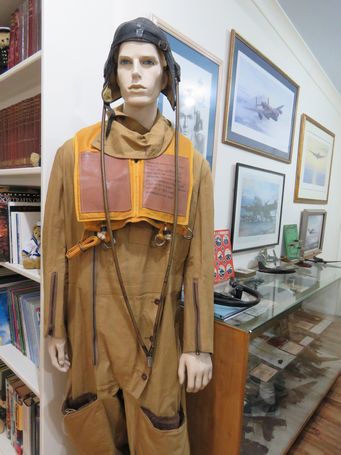
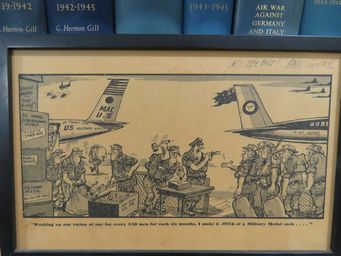
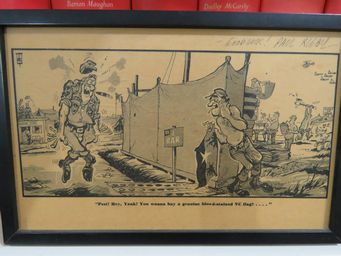
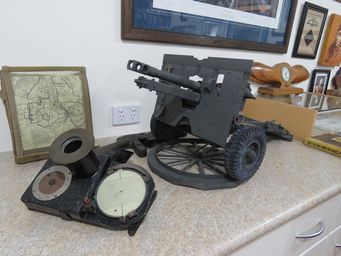
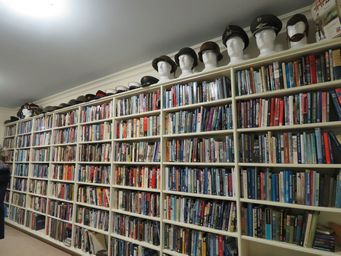
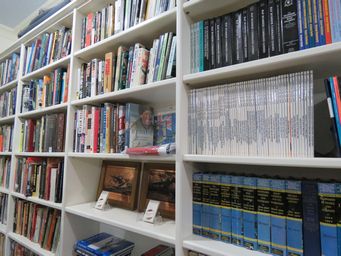
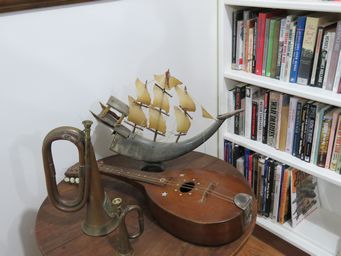
Bader was sent to hospital in the French town of Saint-Omer. Despite having only one prosthetic leg, he made a rope out of bed sheets
and escaped out of the window, however he was soon recaptured.
After leaving hospital, Bader was invited to visit an airfield by German air ace Adolf Galland. Bader, still missing one leg, was treated with great respect by Galland and was able to sit in the cockpit of his personal 109.
Further humanity in wartime was shown when Galland approached the British authorities and
offered them safe passage to fly over another leg for Bader. The operation was personally approved by Hermann Goering, himself a World
War I fighter ace.
Following a number of escape attempts while a prisoner-of-war, Bader was sent to Colditz Castle where he remained
for three years until the castle was liberated in 1945.
'Dont listen to anyone who tells you that you cant do this or that,'
he once said. 'Never let them persuade you that things are too difficult or impossible.'
Sir Douglas Bader was knighted in 1976. With failing health, he suffered a fatal heart attack on the 5th of September 1982 at the age of 72. Many former comrades
and wartime adversaries, including Adolf Galland, attended his memorial service.
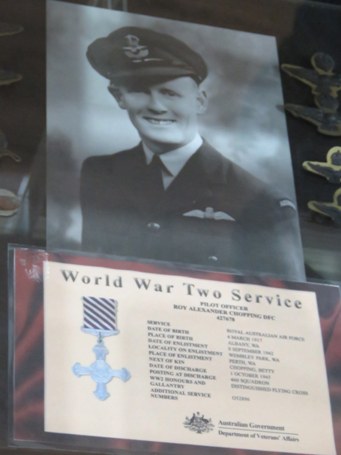
This cabinet houses Johns parents memorabilia. His father, Jim, served as a paratrooper and should have landed with the first group
at Normandy on D-Day. However, he was injured on his last practice jump and was sent to Scotland to recuperate. He then joined the
Seaforth Highlanders and took part in the Battle of the Bulge before serving out the war in India. Johns mother served with the British
Womens Land Army.
A mannequin dressed in a WWII era Sidcot flying suit. Sydney Cotton was an Australian airman who served with the Royal Naval
Air Service during WWI. He designed the suit to protect pilots from the harsh elements related to high elevation, cold temperature
flying.